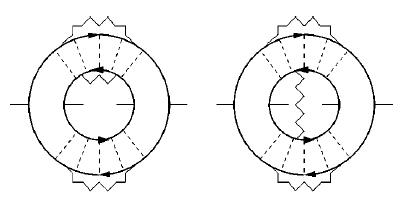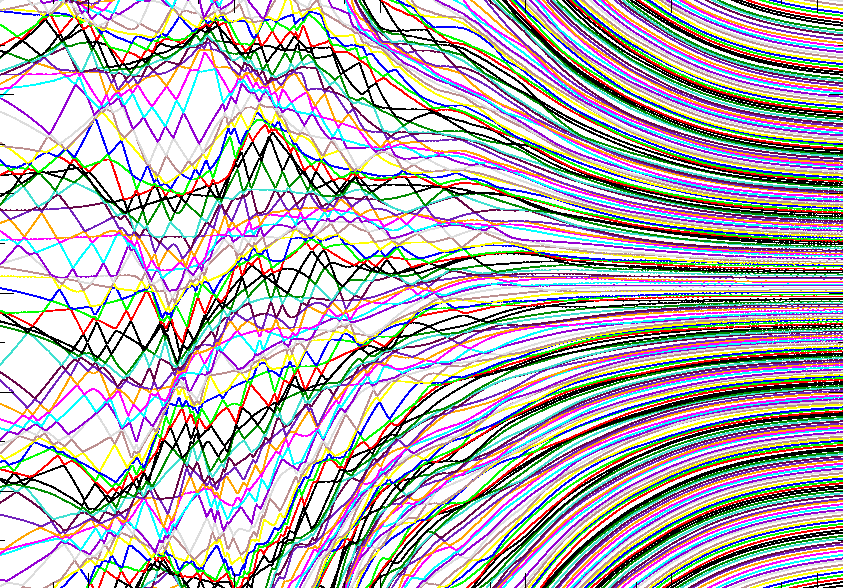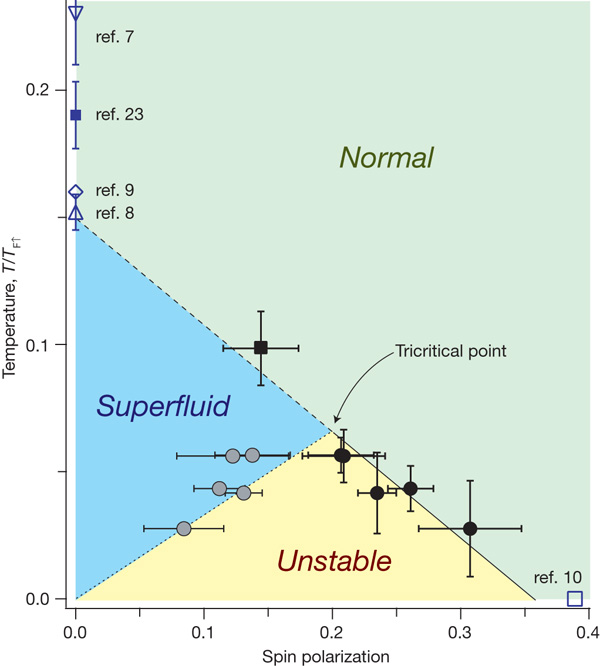Research: physics

Although the activities of the group have shifted substantially towards
biologically-inspired research, to date the majority of research projects
have been targeted at the development of theoretical approaches to address
problems in condensed matter and ultracold atom physics. Over the years, the
group has made contributions to the study of quantum interference effects in
phase coherent (mesoscopic) structures, correlated electron, electron-hole and
matter-light systems and, most recently, ultracold atom physics.
In the field of
mesoscopic physics, we have studied quantum interference phenomena
in weakly disordered normal and superconducting systems. These studies have
been based on a general theoretical framework in which the quantum statistical
properties of weakly disordered conductors are expressed as a field theory
involving an action of nonlinear sigma-model type. Applying this methodology
 has largely been focussed on the study of spectral and transport properties of
metallic conductors, we established a platform to describe a new and general
class of mesoscopic correlations involving parametric dependences on external
fields. These studies provided a generalization of the universal Wigner-Dyson
energy level correlations in
random matrix
ensembles, finding applications beyond the realm of mesoscopic
physics. The same field-theoretic scheme revealed a surprising connection
between the eigenvalue correlations in random matrix ensembles, the dynamical
properties of the Calogero-Sutherland model, and continuous matrix models in
string theory.
has largely been focussed on the study of spectral and transport properties of
metallic conductors, we established a platform to describe a new and general
class of mesoscopic correlations involving parametric dependences on external
fields. These studies provided a generalization of the universal Wigner-Dyson
energy level correlations in
random matrix
ensembles, finding applications beyond the realm of mesoscopic
physics. The same field-theoretic scheme revealed a surprising connection
between the eigenvalue correlations in random matrix ensembles, the dynamical
properties of the Calogero-Sutherland model, and continuous matrix models in
string theory.
Building upon this methodology, we generalized the nonlinear sigma-model
scheme to target mesoscopic fluctuations in weakly disordered superconducting
compounds and proximity effect devices. These studies led to the
identification of novel localization phenomena in symmetry-broken
superconductors, and provided insight into the mechanism of Anderson
localization in normal compounds. Finally, our investigations of weakly
disordered systems led to the development of a general field-theoretic
framework to describe spectral correlations of irregular ballistic quantum
systems - a subject that has become knows as
quantum chaos.
In the field of strongly correlated electron systems, the group has
contributed to a range of topics, from studies of charge carriers in magnetic
Mott insulators and high temperature superconductivity, to normal phase
behaviour and quantum criticality in itinerant metamagnetic systems. Our
studies of the recently-discovered graphite intercalate superconducting
compounds were the first to identify the role of interlayer states in
controlling electron correlations and facilitating the transition. Finally,
in the field of strongly correlated electron-hole systems, we have published
on coherence and Bose-Einstein condensation phenomena in highly excited
semiconductors.
Current collaborators:
Joe Bhaseen (King's College, London)
Jonathan Keeling (St. Andrews)
 addressed several topics within this area. In particular, we have explored the
dynamics of condensate formation in two-component Fermi gases in the regime of
BEC-BCS crossover, resonance superfluidity in the regime of population and
mass imbalance, novel ground states of mutli-component Bose-Hubbard systems,
and light-matter interaction in Bose-Hubbard mixtures - the atomic realisation
of cavity QED. Current research activities embrace a range of topics from
dynamical quantum phase transitions and superradiance phenomena in
Bose-Einstein condensates coupled to optical cavities, itinerant
ferromagentism, quantum criticality in resonant Fermi systems, and
manifestations of phase coherence effects in disordered atomic gases.
addressed several topics within this area. In particular, we have explored the
dynamics of condensate formation in two-component Fermi gases in the regime of
BEC-BCS crossover, resonance superfluidity in the regime of population and
mass imbalance, novel ground states of mutli-component Bose-Hubbard systems,
and light-matter interaction in Bose-Hubbard mixtures - the atomic realisation
of cavity QED. Current research activities embrace a range of topics from
dynamical quantum phase transitions and superradiance phenomena in
Bose-Einstein condensates coupled to optical cavities, itinerant
ferromagentism, quantum criticality in resonant Fermi systems, and
manifestations of phase coherence effects in disordered atomic gases.